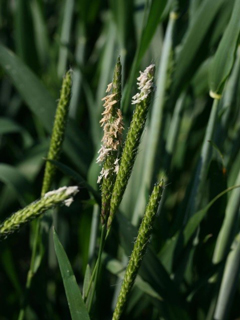Control of black-grass (Alopecurus myosuroides Huds.) by integrated crop measures.
Black-grass as a weed problem increases in Sweden. It rapidly develops resistance against selective grass herbicides. Future strategies against black-grass include other control measures than just herbicides. This project investigates what the impact of the establishment of the crop has on the occurrence of black grass and other weeds. Factors examined in this study are the competitiveness of selected varieties in combination with time of sowing and seed rate and how they interact. Black grass has a short but variable dormancy. The length of the dormancy is influenced by weather conditions during period that the seeds are developed and mature. Warm, dry years providing short dormancy and seed can be stimulated to germinate by minimized soil cultivation methods, with a subsequent mechanical or chemical control before sowing. Cold year provides longer dormancy. To avoid newly produced seeds to germinate in the subsequent crop plow them down before sowing. These factors shall be examined under Swedish conditions. The results are intended to be used in strategies with situation-specific measures. Experiences learned can be applied in both strategies with integrated control of conventional cropping systems and on weed control in organic cropping systems.
Project leader: Anders TS Nilsson
Collaborators: Lars Andersson, Allan Andersson, David Hansson and Lena Holm
Partners: Henrik Hallqvist Swedish Board of Agriculture.
Funding: Swedish Board of Agriculture
Links
